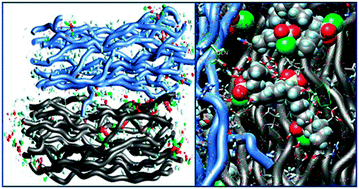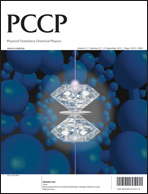Interaction of collagen with chlorosulphonated paraffin tanning agents: Fourier transform infrared spectroscopic analysis and molecular dynamics simulations†
Abstract
The binding of chlorosulphonated paraffins to collagen triple helices is studied by means of classical molecular dynamics simulations and experimental spectroscopic techniques in order to disclose the principal characteristics of their interaction during the leather fattening process. Indeed, collagen is the main target to develop new leather modifying agents with specific characteristics, and an accurate design of the collagen binders, supported by predictive computational strategies, could be a successful tool to obtain new effective eco-compatible compounds able to impart to the leather the required functionalities and distinctive mechanical properties. Possible effects caused by the tanning agents on the collagen matrix have been identified from both experimental and theoretical points of view. Computational data in agreement with experiment have revealed that chlorosulphonated paraffins can interact favorably with the collagen residues having amine groups in their side chains (


 Please wait while we load your content...
Please wait while we load your content...